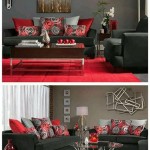How To Decorate Mandir at Home: Simple and Serene Sanctuaries
Creating a mandir, or home temple, is a deeply personal and meaningful endeavor. It provides a dedicated space for prayer, meditation, and connecting with the divine. Decorating this space should be approached with reverence and a focus on simplicity. The goal is to create an environment conducive to spiritual reflection, without overwhelming the senses or detracting from the primary purpose of worship.
The following guidelines offer a structured approach to decorating a home mandir in a simple yet aesthetically pleasing manner. Considerations cover space allocation, color schemes, idol placement, and the incorporation of decorative elements that enhance the spiritual ambience.
Key Point 1: Selecting the Right Space and Structure
The first consideration when establishing a mandir at home is selecting an appropriate space. Ideally, the area should be quiet, clean, and free from distractions. A separate room is preferable, but a dedicated corner in a living room, bedroom, or even a hallway can also suffice. The chosen space should be treated with respect and kept free from clutter.
The orientation of the mandir is a significant factor. In Vastu Shastra, the northeast corner of the home is considered the most auspicious location for a mandir. If this is not feasible, the east direction is a suitable alternative. Facing the deity towards the east ensures that the worshipper also faces east or north while praying, which is considered favorable.
Once the location is determined, the next step is to choose the structure that will house the deities. Numerous options are available, ranging from simple shelves to elaborate wooden or metallic cabinets. The choice depends on the available space, budget, and aesthetic preferences. Regardless of the style, the structure should be sturdy, well-maintained, and elevated off the ground. This elevation symbolizes the sanctity of the space and elevates it above the mundane.
For smaller spaces, a wall-mounted mandir or a simple shelf can be an excellent choice. These options save valuable floor space and are easy to install. Larger homes may accommodate freestanding mandirs featuring intricate carvings and multiple tiers. Irrespective of the size, the structure should complement the overall décor of the room while maintaining a distinct identity as a sacred space.
The material of the mandir is another factor to consider. Wood is a popular choice due to its natural warmth and association with traditional craftsmanship. Marble is another elegant option, known for its durability and smooth texture. Metal, particularly brass or copper, is also used for its auspicious properties and association with divine energy. When selecting the material, consider its maintenance requirements and its compatibility with the existing décor.
Key Point 2: Emphasizing Purity Through Color and Lighting
The color scheme of the mandir plays a crucial role in creating a serene and uplifting atmosphere. Light and neutral colors are generally preferred, as they promote a sense of peace and tranquility. White, cream, light yellow, and pastel shades are excellent choices for the walls, the backdrop of the deities, and any decorative elements. These colors reflect light and make the space feel more open and airy.
Avoid using dark or overly vibrant colors, as they can be distracting and create a sense of heaviness. If desired, small accents of color can be incorporated through accessories such as flowers, diyas (oil lamps), or fabric. The use of gold and silver accents can add a touch of elegance and auspiciousness.
Lighting is another critical aspect of mandir decoration. Natural light is ideal, so if possible, position the mandir near a window. If natural light is limited, artificial lighting can be used to create a warm and inviting ambience. Avoid harsh fluorescent lights, which can be jarring and detract from the spiritual atmosphere. Instead, opt for soft, diffused lighting from lamps or spotlights. Dimmable lights are particularly useful, as they allow adjusting the brightness to suit the mood and time of day.
Diyas are an integral part of traditional mandir lighting. The flickering flame of a diya symbolizes the dispelling of darkness and the illumination of knowledge. Diyas can be placed in front of the deities or along the edges of the mandir. Ensure that the diyas are placed safely and away from flammable materials.
String lights, particularly those with warm white or golden hues, can add a festive touch to the mandir. They can be draped around the deities, along the edges of the mandir, or around the room. However, exercise caution and avoid using excessive or overly bright lights, as they can be distracting.
Key Point 3: Idol Placement and Decorative Elements
The placement of deities within the mandir is a matter of personal faith and tradition. However, there are some general guidelines that can be followed. The main deity should be placed in the center, at the highest point of the mandir. Other deities can be arranged around the central deity, in a hierarchical order. Avoid placing deities directly on the floor; instead, use a pedestal or a raised platform.
Ensure that the deities are facing east or west. Facing east is considered more auspicious, as it symbolizes the rising sun and new beginnings. However, if this is not possible, facing west is also acceptable. The deities should be kept clean and well-maintained. Regularly clean the idols and remove any dust or dirt.
Decorative elements can enhance the beauty and sanctity of the mandir. However, it is important to keep the decorations simple and tasteful. Avoid using excessive or gaudy decorations, as they can be distracting and detract from the spiritual atmosphere. Fresh flowers are an excellent way to add color and fragrance to the mandir. Place the flowers in vases or arrange them around the deities. Change the flowers regularly to ensure that they remain fresh.
Incense sticks or dhoop can be burned to create a fragrant and peaceful atmosphere. The smoke from the incense is believed to purify the air and create a connection with the divine. Place the incense holder away from flammable materials and ensure that the area is well-ventilated.
Fabric can be used to create a backdrop for the deities or to cover the mandir. Choose fabrics that are light and airy, such as cotton or silk. Avoid using heavy or dark fabrics, as they can make the space feel cluttered. The fabric can be decorated with simple patterns or embroidery.
Photographs or paintings of deities, gurus, or sacred symbols can be displayed in the mandir. Choose images that are inspiring and uplifting. Frame the images appropriately and arrange them in a respectful manner.
Key Point 4: Maintaining Cleanliness and Order
Cleanliness and order are paramount in maintaining the sanctity of the mandir. Regular cleaning is essential to ensure that the space remains free from dust, dirt, and clutter. Sweep or vacuum the floor regularly and wipe down the surfaces of the mandir. Dust the deities and remove any cobwebs. Keep the area around the mandir free from clutter. Store prayer books, religious items, and other accessories in an organized manner.
A designated storage area can be created near the mandir to keep these items out of sight. Empty the trash regularly and keep the area around the mandir free from unpleasant odors. Fresh air is essential for creating a peaceful and uplifting atmosphere. Open the windows regularly to ventilate the space and allow fresh air to circulate.
Maintaining a serene and uncluttered mandir is a continuous process. By adhering to the principles of simplicity, purity, and order, individuals can create a sacred space that fosters spiritual growth and inner peace. The mandir should be a reflection of their personal faith and a sanctuary where they can connect with the divine.
Ultimately, the most important aspect of decorating a home mandir is the intention and devotion with which it is approached. A simple, clean, and peaceful space created with love and reverence will be far more conducive to spiritual practice than an elaborate and cluttered one. The goal is to create an environment that supports and inspires the worshipper's connection with the divine, a sanctuary that nourishes the soul and fosters inner peace.

40 Stunning Home Temple Design Ideas Mandir Decoration

35 Diwali Mandir Decoration Ideas With Diyas Flowers More

Embrace Tranquility Simple Mandir Designs For Every Home

Easy And Beautiful Temple Decoration Idea From Lotus Paper Flowers Puja Ghar Decor At Home

Creative Wooden Mandir Designs To Enhance Your Home

35 Diwali Mandir Decoration Ideas With Diyas Flowers More

Pooja Mandir Decoration Ideas At Home Holla Homes

Beautiful Temple Design For Home Homes

Creative Wooden Mandir Designs To Enhance Your Home

65 Latest Mandir Design In Walls 2025
Related Posts







